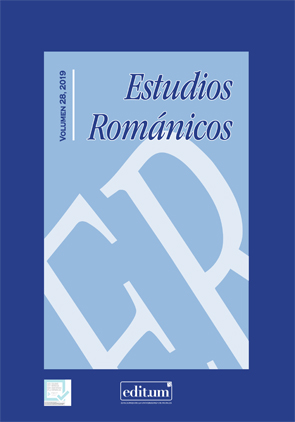French epistolary novel in the Enlightenment
Abstract
The eighteenth century is considered as the golden age of epistolary art. If we analyze the historical and social value of letters, we will notice that epistolary change soon becomes one of the principal ways of communication and of providing information. The most relevant merit, which is attributed to the epistolary novel, is the immediate reproduction that touches feelings. So, the epistolary novel removes the temporal distance existing between the personal history and its written reproduction. The most famous writers of the time (like Montesquieu) and libertine writers (Laclos and Sade particularly) have employed the epistolary novel showing several intentions.
Downloads
-
Abstract1199
-
PDF (Français )2071
References
ANSART, Guillaume (2003): “Love, pleasure and subjectivity in 18th century French novel”. Eighteenth-century Studies. Vol. 36, N. 2: 270-275.
BUREL, Charlotte (2012): “Le texte en perspective”. Pierre-Ambroise-François Choderlos de Laclos. Les liaisons dangereuses. Paris: Gallimard, 489-545.
CAZENOBE, Colette (1991): Le système du libertinage de Crébillon à Laclos. Oxford: Voltaire Foundation.
DIDIER, Béatrice (1998): Choderlos de Laclos: Les Liaisons dangereuses. Pastiches et ironies. Paris: Éditions du temps.
FELLOWS, Otis (1972): “Le roman épistolaire français”. Dix-huitième siècle. N. 4: 17-38.
GRASSI, Marie Claire (1994). “L’art épistolaire français, XVIIIe et XIXe siècle”. Pour une histoire des traités de savoir-vivre en Europe. Clermont-Ferrand: Publications de la Faculté des Lettres et Science Humaines de Clermont-Ferrand, 1994, 301-366.
JOST, François (1996): “Le Roman épistolaire et la technique narrative au XVIIIe siècle”. Comparative Literature Studies. Vol. III, N. 4, 1996: 397-427.
LACLOS, Pierre-Ambroise-François Choderlos de (2012) [1782]: Les Liaisons dangereuses. Paris: Gallimard.
MARTIN, Angus (1970): “Romans et romanciers à succès de 1751 à la Révolution d’après les rééditions”. Revue des Sciences Humaines. N. 35: 383-389.
NAGY, Peter (1975): Libertinage et révolution. Paris: Gallimard.
ROUSSET, Jean (1983). “Les lecteurs indiscrets”. Laclos et le libertinage. Paris : P.U.F., 89-96.
SÉNAC DE MEILHAN, Gabriel (2004) [1797]: L’émigré. Paris: Gallimard.
Las obras que se publican en esta revista están sujetas a los siguientes términos:
1. El Servicio de Publicaciones de la Universidad de Murcia (la editorial) conserva los derechos patrimoniales (copyright) de las obras publicadas, y favorece y permite la reutilización de las mismas bajo la licencia de uso indicada en el punto 2.
2. Las obras se publican en la edición electrónica de la revista bajo una licencia Creative Commons Reconocimiento-NoComercial-SinObraDerivada 3.0 España (texto legal). Se pueden copiar, usar, difundir, transmitir y exponer públicamente, siempre que: i) se cite la autoría y la fuente original de su publicación (revista, editorial y URL de la obra); ii) no se usen para fines comerciales; iii) se mencione la existencia y especificaciones de esta licencia de uso.
3. Condiciones de auto-archivo. Se permite y se anima a los autores a difundir electrónicamente las versiones pre-print (versión antes de ser evaluada) y/o post-print (versión evaluada y aceptada para su publicación) de sus obras antes de su publicación, ya que favorece su circulación y difusión más temprana y con ello un posible aumento en su citación y alcance entre la comunidad académica. Color RoMEO: verde.












